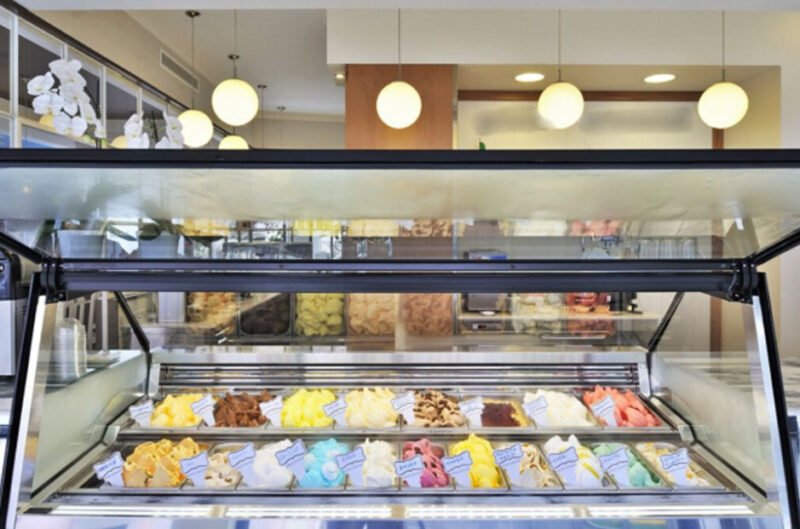When starting up a dessert shop or messing up your kitchen with appliances, soft serve freezers, or ordinary ice cream makers could make all the difference to your business efficiency and product quality. The Taylor 152 soft serve freezer represents professional standards for the high production capacity of ice cream soft serves, while the ordinary ice cream makers are an advantage for more versatility when it comes to cold desserts production. This elaborate comparison enumerates eight important adjectives to be classified by this difference, such as the capacity of production, the manipulation of texture, the operation, and the maintenance costs. This is important to an ice cream store that is thriving, a restaurant that’s trying its hand at frozen treats, or even a catering business. Understanding the difference would therefore give way to the proper investment of its specific needs and customer orders concerning consumption.
Production Speed and Capacity
Soft-serve freezers are designed for continuous high-volume production, with hundreds of servings per hour made with minimal downtime. The in-line freezing cylinder and automatic dispensing mechanism allow for rapid service when demand is high. Traditional ice cream makers need to be batch processed, with every batch requiring 20-40 minutes of freezing the mixture. While there are higher batch capacity commercial ice cream machines available, these simply cannot match the on-demand serving capacity of the soft serve machine. For high-traffic stores or high-demand product offerings, soft serve freezers enable clear operational advantages in terms of speed and volume.
Product Texture and Consistency
Soft serve freezers create the light, fluffy texture (40-60% overrun) typical of good soft serve.
Continual freezing process adds air uniformly without inducing growth of ice crystals. Ice cream makers produce more textural contrast – from dense gelato to fluffy American-style ice cream – depending on the model of equipment and recipe. However, attaining professional consistency requires high skill and care in using batch freezers. Soft serve machines automate texture consistency control while serving, so they are ideal for operations that prefer standardisation and efficiency to craftsman variation.
Ingredient Flexibility and Recipe Options
Ice cream machines provide greater freedom to experiment with recipes, fat percentages, and mix-ins. Artisans can create small batches of unique flavours and adjust formulas as they please. Soft serve machines require specially designed mixes formulated for the equipment’s continuous freezing process. Even though some modern soft serve machines can handle a range of mix viscosities, they generally make fewer recipe compromises than regular ice cream machines. Signature flavour or specialist companies or upscale ingredient specialist companies may love the batch freezers’ flexibility, but companies that have to serve basic flavours fast love soft serve’s simplicity.
Customer Attraction and Presentation
Soft serve’s vintage allure and swirl presentation create a visual impact at service counters. Ease of preparation for flawless cones or dishes in the heat enhances customer satisfaction during rushes. Handmade ice cream offers a luxurious perception with visible mix-ins and premium flavours, which are desirable for conscious food consumers. Some sites utilise both – batch freezers for speciality items and soft serve for high-turn standard offerings. The choice is made in terms of target markets and whether premium positioning or quickness creates more business value. Existing customers are more likely to expect both quality and spectacle from dessert goods.
Flexibility and Menu Enhancement
Traditional ice cream machines allow for greater menu innovation; sorbet, frozen yoghurt, and creative textures can all be produced in the same equipment. Soft serve machines are limited to authorised mixes, though some units can alternate between chocolate, vanilla, and twist. Combo units serving both soft serve and frozen custard slightly increase flexibility. Companies expecting regular menu adjustments or seasonal promotions favour the versatility of batch freezers, whereas operations having consistently high-demand products appreciate the efficiency of soft serve. Some successful operators use both systems to cover all market segments.
Conclusion:
The choice between a soft serve freezer and a traditional ice cream maker ultimately depends on your business model, volume requirements, and customer expectations. Both systems are usually found in most developing operations, soon to get the most out of their dessert program. Plan your expected daily volume, employee abilities, and menu strategy in detail before investing. With proper selection and use, either of the two machines can prove to be a profitable anchor of your frozen dessert offerings when engineered to suit your specific operational needs and brand plan.









